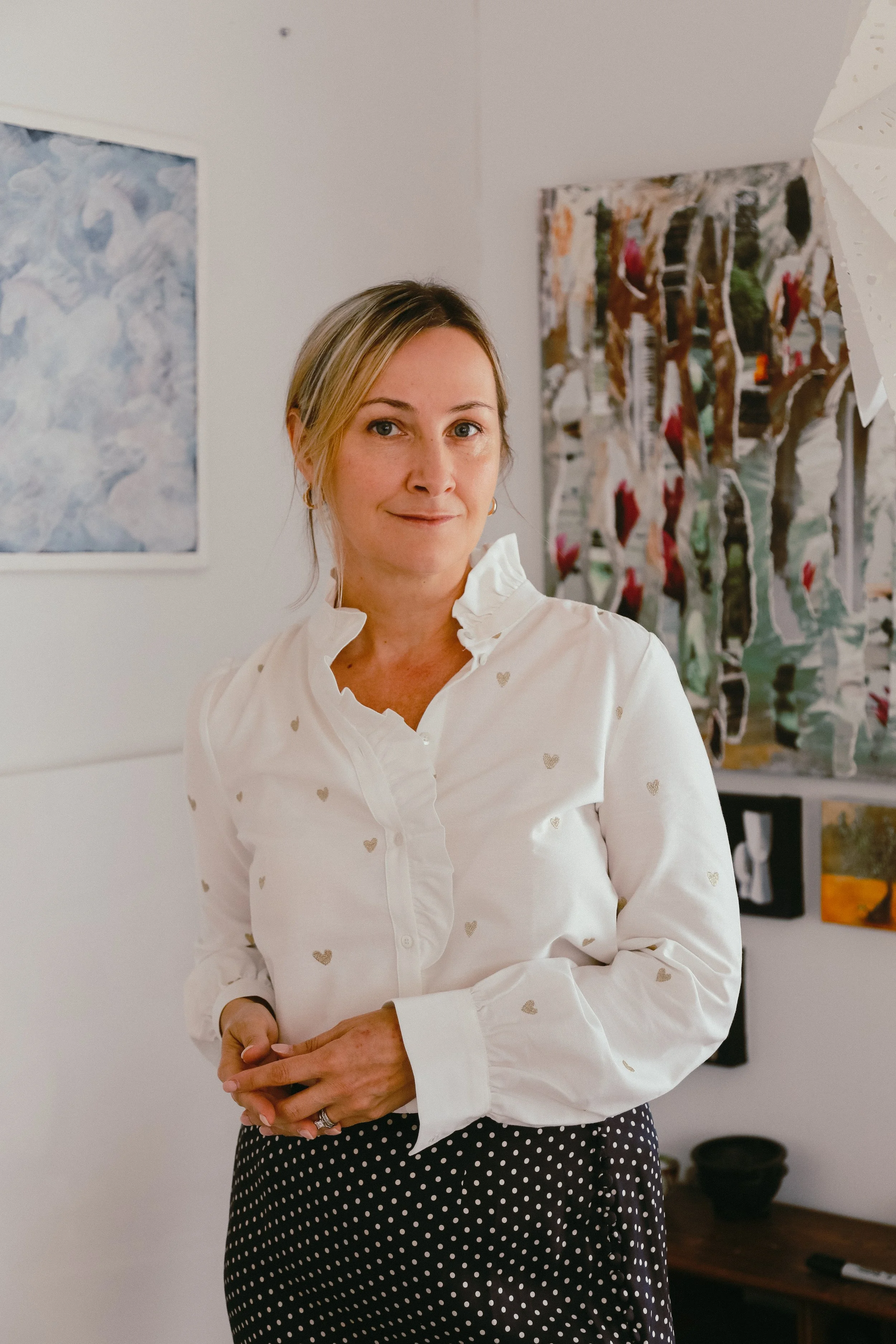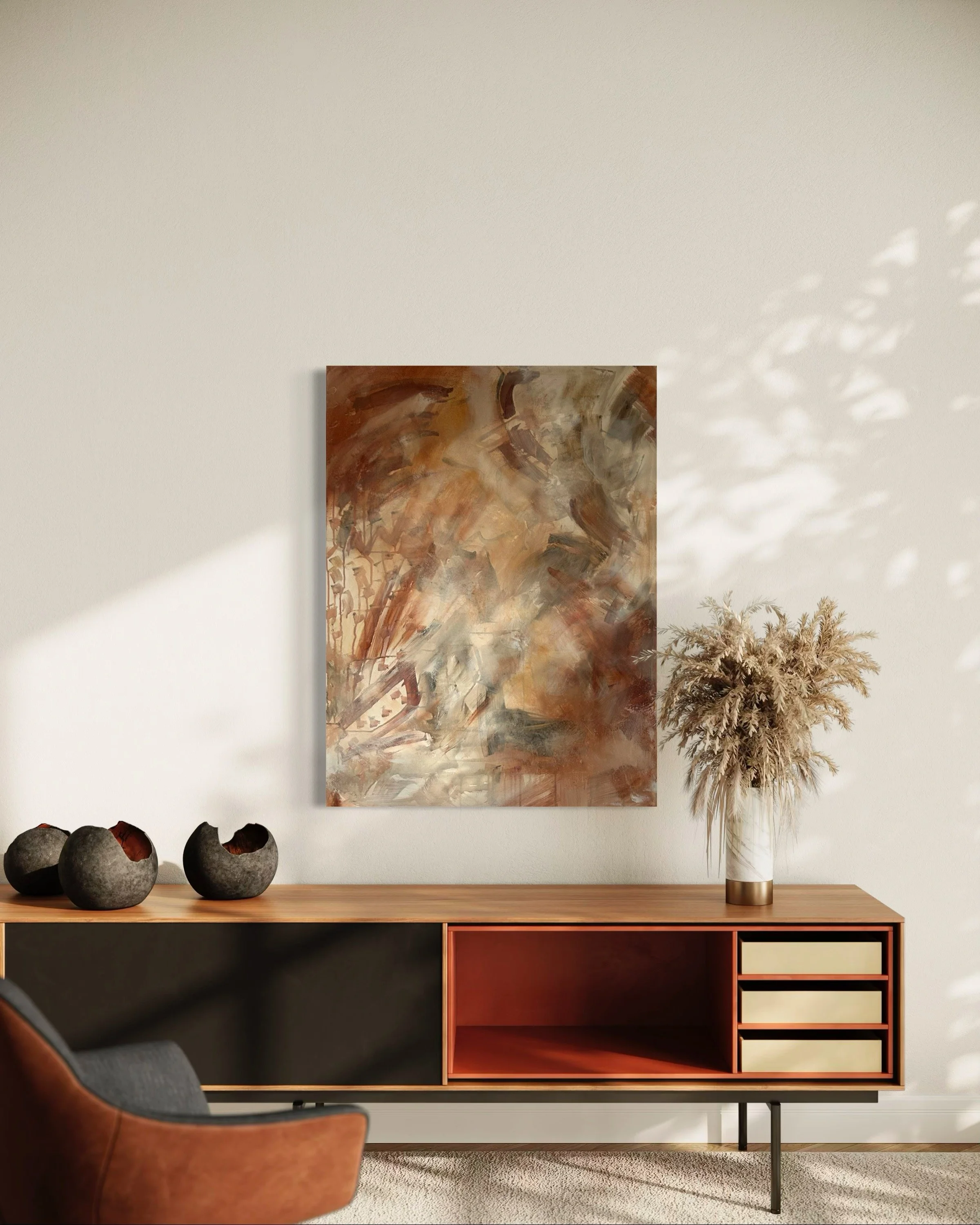Interview
Natalie Vélez
In 2009, Natalie Vélez moved from St. Petersburg, Russia to St. Petersburg, Florida. Natalie credits her relocation for opening a new world for her: that of American contemporary art and how it can alter the ways in which we visualize and conceptualize the world. Natalie earned her B.A. and M.A. degrees from the State University for Culture and Arts in St. Petersburg, Russia. She is currently pursuing her Ph.D. in philosophy and aesthetics in visual art from the Institute for Doctoral Studies in the Visual Arts, headquartered in Maine (IDSVA). In her research, she explores the intersection of politics, ethics, human experiences and cross-cultural art collaborations. Her art practice explores dialogue, resistance, and human connection, with a strong passion for community building through art and advocating for art education across all ages. Natalie’s professional experience includes working as an international education and business consultant, and as an art curator. She has curated art shows at local venues such as the Vinoy Hotel, Tampa Zoo, and Carrollwood Cultural Center. Her articles have been published in St. Pete Life Magazine. As an educator of interdisciplinary studies relating to art and philosophy, she has presented her work on the intersections of art, aesthetics, and philosophy during her residencies in Mexico and Italy, as well as at institutions such as the University of Tampa, Eckerd College, and the Museum of Fine Arts. She has also spoken at the 60th International Congress on Medieval Studies at Western Michigan University and presented at the 11th In Vivo Dubrovnik Conference on the Philosophy of Art at the Inter-University Centre in Dubrovnik, Croatia.
What is your background and how did you start your journey in the art world?
“I am a Florida-based artist, curator, and educator, originally trained in St. Petersburg, Russia, where I earned my B.A. and M.A. in humanities and culturological studies. After relocating to the US seventeen years ago (I moved from St. Pete, Russia to St. Pete, Florida), I have been deeply involved in the contemporary art scene: from running an art gallery to serving as a docent and a Chair of Art Around As committee at the Museum of Fine Arts. Art has always been an important part of my life.
My journey from someone who simply appreciated art to becoming a fine artist began during my university years in Russia, when I visited a small exhibition of Kuzma Petrov-Vodkin, a Russian painter who once studied with Anton Ažbe and greatly influenced modern art. I remember standing in front of his iconographic, bold paintings—his studies of glass, his fascination with light and reflection. His departure from classical styles toward something new struck me deeply and filled me with excitement. From then on, art became my source of inspiration, meditation, and most importantly, communication—a language beyond formal linguistics, unbound by rigid constructs.
Currently pursuing a Ph.D. in philosophy and aesthetics in the US, I balance studio practice with curatorial projects and teaching. My work bridges art, ethics, and interdisciplinary dialogue, reflecting on human connections, resistance, and the evolving role of beauty. I am deeply passionate about building community through art and believe in the importance of art education across all ages, fostering creativity as a lifelong practice.”
What does your work aim to say? Does it comment on any current social or political issues?
“It’s a simple question, but one of the most difficult to answer. Each new work or series I begin starts with a question. For example: how can we create dialogue between people with different, and sometimes opposing, worldviews? How can we learn to listen, to resist dehumanization, and to create a shared space for conversation? These questions inspired my series In Conversation, which later grew into a large collaborative project. My work is political in the original sense of the Greek word polis (πόλις), meaning not just ‘city’ but a community bound by shared life and responsibility. Within my practice, I seek to redefine community as a nomadic spirit rooted in respect for life, mutual support, and deep appreciation for the land. At the moment, my focus turns toward our relationship with nature—how humans interact with and coexist alongside the community of plants that sustains us. In my current series of paintings and mixed media, I explore the human condition as a journey of responsibility, reimagining how we might live and create together.”
Do you plan your work in advance, or is it improvisation?
“My process begins with a main idea, a lingering thought, or a pressing question. I sit with it, meditate on it, until the urge to communicate moves beyond a mental exercise. I rarely have a clear vision of the final result or a strict plan to follow. Instead, I work intuitively, allowing the piece to unfold in its own rhythm, until it reaches the point where I feel it has expressed what it was meant to say. At that moment, the artwork becomes an autonomous entity—something that speaks beyond me. It is a deeply satisfying process, one that frees me from self-judgments, allowing the work to emerge with its honesty and its independent voice.”
Are there any art world trends are you following?
“I sometimes feel I could benefit from following trends, yet my personal art-making process often leads me away from the mainstream. Perhaps that is why I never committed to a single genre or medium. I move freely between large-scale abstractions, photography and intimate representational works in tempera and Venetian plaster. My fascination with symbolism and Byzantine iconographic aesthetics has drawn me to study storytelling through geometry, gestures, and fresco techniques. This exploration allows me to continuously rethink my relationship with history, art, and spirituality, rather than aligning with fleeting trends. Even in some of my abstracts I follow some of iconographical principals and symbolism, especially in approaching my choice of colors.”
What process, materials and techniques do you use to create your artwork?
“Currently, I work primarily with acrylic paint. As I mentioned before, I also love to incorporate organic tempera and Venetian plaster to enhance texture or create a specific mood. In some of my mixed media series, I combine photographs taken during my travels and integrate them into my paintings. When I first began my journey, I worked mostly with oil, but now acrylic serves me well in expressing what I need to say—though I may return to oil in the future.”
“For me, art is both a liberator and the most profound form of communication.”
What does your art mean to you?
“For me, art is both a liberator and the most profound form of communication. It allows what cannot be spoken in words to find expression, creating connections that move beyond boundaries of language, culture, or time.”
What’s your favourite artwork and why?
“Giotto’s panels always leave me in awe and admiration. They hold a magnetic pull, a kind of pure magic. In contemporary settings, I had a similarly strong response to the Open Group’s installation Repeat After Me II at the Venice Biennale, which served as an act of resistance against war and revealed how sound connects to our experiences. I cannot commit to a single artwork as the most important—my response shifts depending on where I am in life and what questions I am exploring at the moment.”
Have you had any noteworthy exhibitions you'd like to share?
“In the end of spring 2025, I had a collaborative exhibition with a fiber and mixed media artist Sam Hammer, called IN CONVERSATION. The idea for the show emerged from a shared reflection on the power of art to articulate what exists beyond the limits of language - those emotional truths that resist linear explanations.”








